Electric cars are more useful to their owners when the car can be charged quickly. A large network of fast charging stations is due to be built in California now that the settlement with NRG was fully approved on Monday, and eVgo is free to expand into California. The fact charging station landscape has changed quite a bit since that settlement was reached, and it's worth a look at the current conditions for electric car fast charging.
At the time of the settlement there was only one fast charging standard in use and available in cars. This is the CHADEMO standard developed in Japan and available in the Nissan Leaf and Mitsubishi i-MiEV. With a CHADEMO station the time to recharge a Nissan Leaf drops from 7+ hours for a full recharge, to about an hour most of which is a fast recharge cycle.
The NRG/CPUC settlement calls for 200 "Freedom Stations" to be built across California's four metropolitan areas. Each Freedom Station is to have at least one fast charging station. Because CHADEMO was the only standard available at the time the Freedom Stations are initially required to use CHADEMO charging stations. However the agreement was clouded by SAE's plan to standardize a different fast charging system. Fortunately the CPUC and NRG was wise enough to future-proof the settlement against other fast charging standards as they become available. NRG will be required, as other fast charging standards take hold in the market, to support those standards at the Freedom Stations.
The first and most interesting change in the fast charging landscape is the Tesla Supercharger network.
In June, Elon Musk tantalized us with hints that the Supercharger network would be solar powered and revolutionary. In September, he tweeted that the Supercharger network will resemble aliens landing at a rest stop. The actual Supercharger network is a bold plan that does revolutionize what we think about electric car charging.
The Supercharger is a feature in the Tesla Model S and Model X that enables either car to be completely recharged with 250+ miles of electric driving range in an hour or so. Given that the Model S has a 265 mile EPA-certified electric driving range, adding the ability to completely recharge in an hour makes the Model S the first electric car that can implement that Great American Past-time: the Road Trip. The Supercharger is proprietary to Tesla Motors, and will not be available to other automobile manufacturers. Tesla Motors plans to build a nation-wide network of Supercharger stations over the next few years, and as a result Tesla electric car owners will be able to make cross-country electrically powered trips with relative ease. Owners of other electric car brands will be unable to use the Supercharger stations.
The next change is the expected one, that the SAE J1772 committee approved the SAE DC Fast Charging standard. Proponents of that standard and the CHADEMO standard have been feuding for years, and the SAE committee finally got all the ducks lined up to approve the standard. It builds on the existing J1772 plug to add a pair of high powered DC pins that will enable typical electric cars to recharge in about 1/2 an hour.
The CHADEMO and J1772 fast charging standards are incompatible. This raised the concern that the CHADEMO-compatible fast charging stations being installed now would have to be ripped out and totally replaced with SAE DC Fast Charging stations. However the charging station vendors are thinking ahead with at least ABB, Eaton, and Schneider Electric committing to supporting both the CHADEMO and SAE DC Fast Charging standards. Dual port charging stations have been demonstrated with two cords, one for CHADEMO and one for the SAE system.
The last change in the landscape is some new electric cars that completely skip DC Fast Charging and use three phase AC for fast charging. The first of these, the Renault ZOE, can recharge in 30 minutes, has an urban driving range of 90 miles, and has a very affordable price. The quick recharge time is due to support for charging on 43 kilowatt three phase AC, a rate that is way beyond the 3.3 kilowatt or 6.6 kilowatt typical AC charging rate, and plants the ZOE firmly in the fast charging landscape. It's reported that the latest version of the Smart Fortwo EV supports a 22 kilowatt three phase AC charging system, and Volvo recently unveiled an electric car that supports the same charging rate.
What's behind this is almost certainly an on-board charging unit developed by BRUSA that supports several charging rates including a 22 kilowatt three phase AC for fast charging. It means fast charging one of these electric cars doesn't require an expensive bulky external fast charger, but simply a power cord to connect to a three phase AC power outlet. While those are uncommon in the U.S. they are very common in other countries, especially in Europe.
In the Spring the fast charging landscape was fairly simple, with CHADEMO as the one widely used standard. Today the Tesla Supercharger system is starting to be used. In a couple months the Renault ZOE will go on sale in Europe. And in 2013 electric cars sporting the SAE DC Fast Charging port will go on sale. Each of these offers a different fast charging mechanism, and none of these systems are compatible with the others. In the past electric car adoption was hampered by this sort of incompatibility. The charging station vendors say they can support multiple charging standards. For example, ABB recently announced a charging station that supports both CHADEMO and the 22 kilowatt three phase AC fast charging system. This demonstrates the fast charging infrastructure will support the open fast charging standards, giving future electric car owners comfort that their fast charging electric car won't be left high and dry with an abandoned fast charging standard. It does mean that Tesla electric car owners will be left unable to use the open fast charging standards, because Tesla is taking a proprietary go-it-alone approach.
Where does this leave NRG/eVgo? The settlement requires that when at least two charging station vendors support both the CHADEMO and SAE DC Fast Charging standards, that eVgo must begin to make both standards available at the Freedom Stations. We can expect this condition to trigger during 2013.







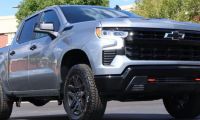
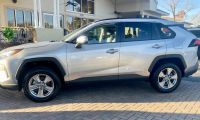
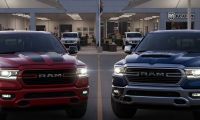
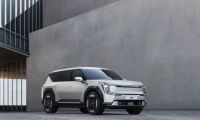
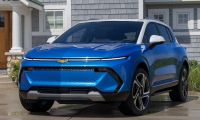
Comments
Does it not seem likely that
Permalink
Does it not seem likely that Tesla will do what it did for the original J1772 plug and make an adapter to allow the new SAE DC Fast Charging J1772 plug to be used with their car?